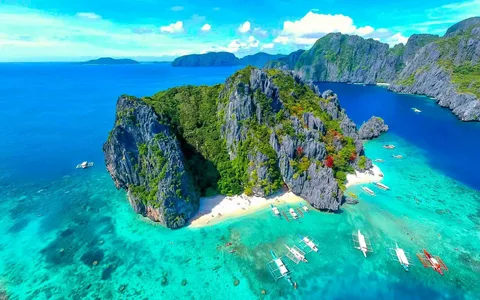Palawan Island, often heralded as the last frontier of the Philippines, continues to captivate the global audience with its unparalleled natural beauty. In 2024, the pristine beaches of Palawan Island remain a testament to the island’s commitment to preserving its ecological heritage while promoting sustainable tourism. This article provides a comprehensive professional overview of the pristine beaches of Palawan Island, Philippines in 2024, highlighting key aspects such as environmental conservation, tourism development, and the unique experiences these beaches offer.
Geographical and Ecological Significance
Palawan Island is situated in the western part of the Philippines and is known for its unique geographical features, including limestone cliffs, crystal-clear waters, and diverse marine life. The island’s beaches are characterized by their fine white sand, turquoise waters, and lush surrounding landscapes. In 2024, efforts to maintain the ecological balance of these beaches have intensified, ensuring that their pristine condition is preserved for future generations.

In 2024, El Nido continues to be a hotspot for island-hopping tours. Visitors can explore the Baciu Archipelago, where hidden lagoons, towering limestone formations, and vibrant coral reefs await. The area’s commitment to sustainable tourism ensures that its natural beauty remains untouched for future generations.
Beaches of Palawan Island
Eco-Friendly Accommodations**: Many resorts and hotels have adopted green practices, such as using renewable energy sources, implementing waste reduction programs, and supporting local conservation projects. Community Involvement**: Local communities play a crucial role in preserving the island’s natural beauty. Community-based tourism initiatives ensure that residents benefit economically while protecting their environment .Environmental Education**: Tour operators and guides are trained to educate visitors about the importance of conservation, encouraging responsible tourism practices.

Challenges and Future Outlook
Despite the progress made, Palawan Island faces ongoing challenges such as climate change, over-tourism, and pollution. Continuous efforts are needed to address these issues and ensure the long-term sustainability of the island’s pristine beaches., Looking ahead, the future of Palawan Island’s beaches hinges on a collaborative approach involving government agencies, local communities, and tourists. By fostering a culture of environmental stewardship, Palawan can continue to be a beacon of natural beauty and sustainable tourism.

Conclusion
The pristine beaches of Palawan Island, Philippines in 2024, stand as a shining example of what can be achieved through dedicated conservation efforts and sustainable tourism practices. As the island continues to navigate the challenges of modern tourism, its commitment to preserving its natural heritage ensures that Palawan will remain a paradise for generations to come.




